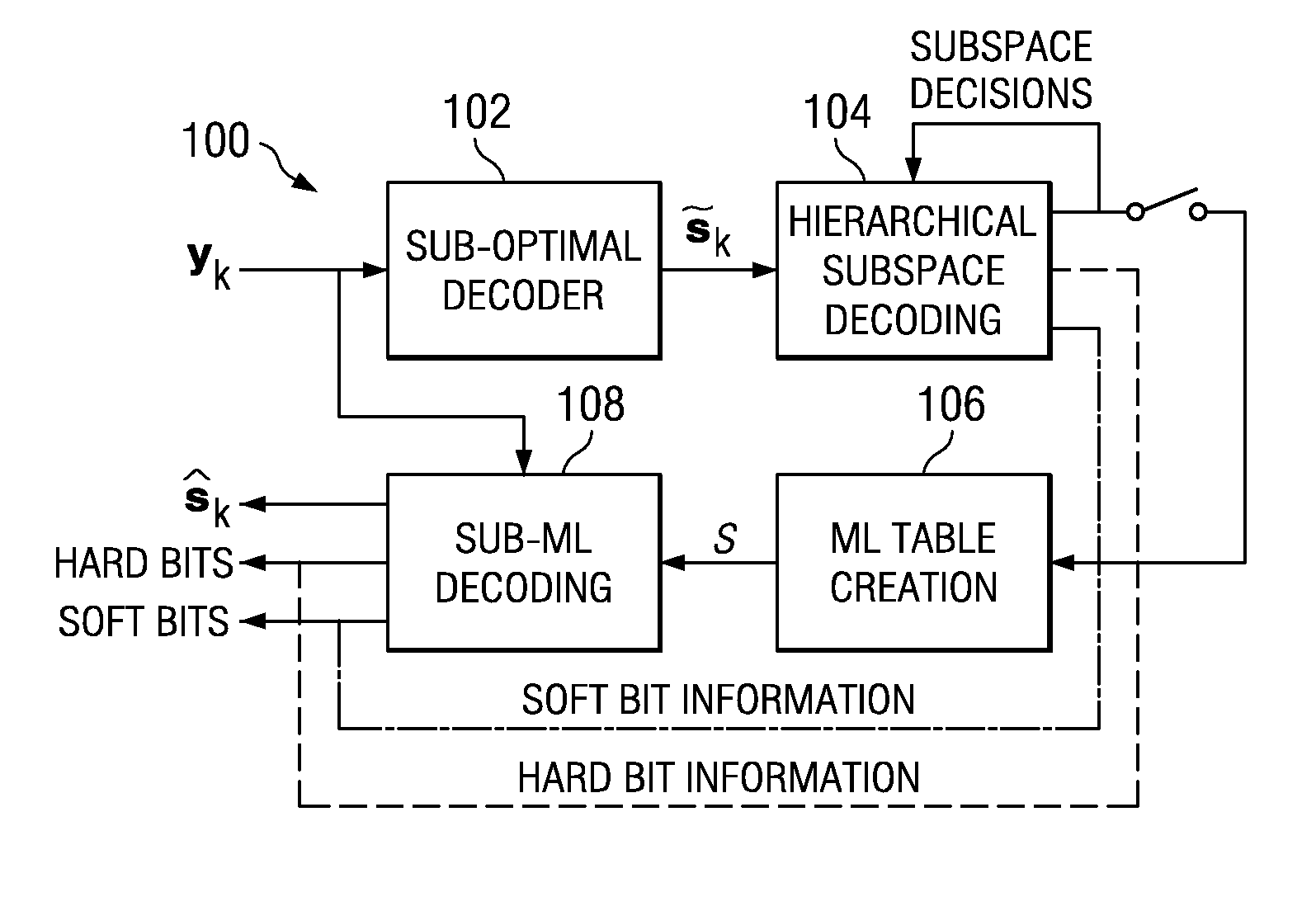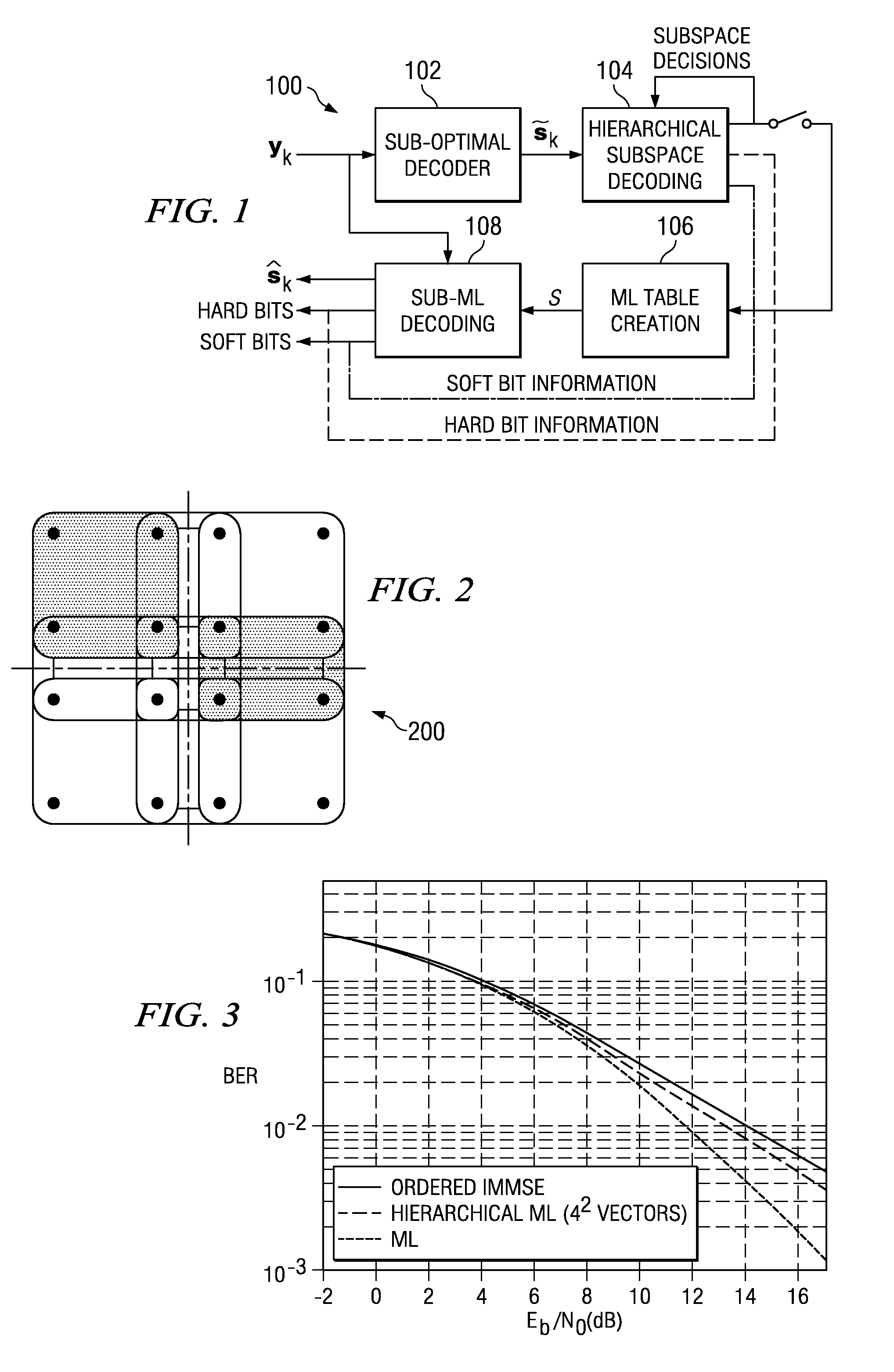Low-complexity hierarchical decoding for communications systems using multidimensional QAM signaling
a communication system and multi-dimensional qam technology, applied in amplitude demodulation, digital transmission, error prevention, etc., can solve the problems of sub-optimal techniques that are unfortunately different in diversity, increase the difficulty of estimating s, and overly computational complexity of decoder types, etc., to achieve dramatic complexity reduction and reduce search space decoding methods
- Summary
- Abstract
- Description
- Claims
- Application Information
AI Technical Summary
Benefits of technology
Problems solved by technology
Method used
Image
Examples
Embodiment Construction
[0040]FIG. 1 is a block diagram illustrating a hierarchical reduced search space decoding method 100 according to one embodiment of the present invention. Received signal vectors y1 . . . yk are fed into a sub-optimal decoder 102 that yields an estimate {tilde over (S)} of the transmitted symbol vector. One example of this would be the zero-forcing decoder where k=T
{tilde over (S)}=H−1[y1 . . . yT]. (3)
[0041]The estimate {tilde over (S)} is then fed into a hierarchical subset decoding block 104. The set of Ns possible symbol vectors is then grouped into overlapping subsets. An example of this grouping for a system where each transmitter is using 16-QAM and T=1 would be to group each dimension as shown in FIG. 2 that illustrates a grouping 200 for a 16-QAM constellation.
[0042]Each subset is represented by a multidimensional point ci. A subset is chosen if its representative point ci minimizes d(ci,{tilde over (S)}) where d is some sort of metric. The subset decoder 104 is hierarchic...
PUM
 Login to View More
Login to View More Abstract
Description
Claims
Application Information
 Login to View More
Login to View More - R&D
- Intellectual Property
- Life Sciences
- Materials
- Tech Scout
- Unparalleled Data Quality
- Higher Quality Content
- 60% Fewer Hallucinations
Browse by: Latest US Patents, China's latest patents, Technical Efficacy Thesaurus, Application Domain, Technology Topic, Popular Technical Reports.
© 2025 PatSnap. All rights reserved.Legal|Privacy policy|Modern Slavery Act Transparency Statement|Sitemap|About US| Contact US: help@patsnap.com



